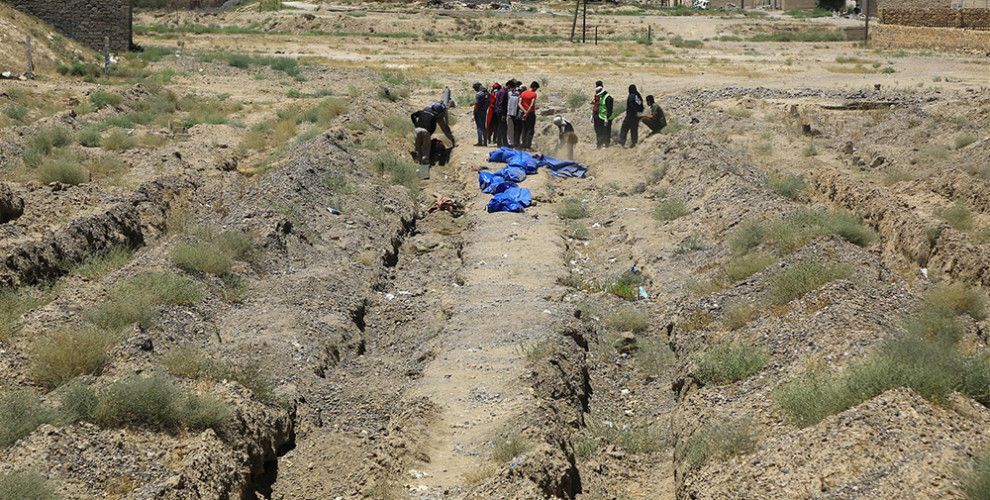More bodies recovered in Raqqa's mass graves
DAESH mercenaries killed thousands of people and buried them in mass graves in Raqqa.
DAESH mercenaries killed thousands of people and buried them in mass graves in Raqqa.

When Raqqa was under the occupation of DAESH (ISIS) mercenaries, thousands of citizens were brutally murdered, their bodies buried in mass graves.
The Emergency Response Team, established after the liberation of Raqqa by the Syrian Democratic Forces (SDF) has so far recovered 1,238 bodies, whose identities have not yet been established, in various mass graves.
DAESH mercenaries had declared Raqqa the capital of their Caliphate. Life for residents turned into a nightmare during the four years of DEASH occupation.
Executions in public places, murders, violence, rape, plunder were carried out on a daily basis. Thousands of civilians were killed and precariously buried in improvised mass graves.
One of the first bodies to be established by the Autonomous Administration, once the city was liberated, was the Emergency Response Team.
In the first stage of its work, the team made up of four people reached villages as well as Raqqa city centre, once these were liberated by the SDF.
The Emergency Response Team, which speeded up the work in the city center, started to recover bodies from a mass grave. The team was made up of 4 doctors and around 40 people.
The team has so far identified 4 mass graves and recovered 600 bodies in mass graves in Al-Rashid, behind the Lawiran Park and the old courthouse, and 500 bodies in the Panorama and Baghdad mass graves.
Number of bodies is unknown
The mercenaries dug many deep pits parallel to each other in parks, gardens and playgrounds in the city, and buried people at random, after having killed them.
In the mass graves identified so far, bodies of children, women and youngsters massacred by DAESH mercenaries have been excavated. So far the Emergency Response Team has recovered 1,328 bodies.
Insufficient technical equipment
Team members are working non-stop with simple tools in their hands. Citizens in the city report to the team the possible places where mass graves can be found, according to the information they receive from relatives in the city.
In some cases relatives are able to identify their loved ones. The bodies of those who have not been identified are buried in the cemeteries of the city so that they can be identified later on.
The Emergency Response Team is making a huge effort to keep up with the work despite the insufficient technical equipment in its hands.